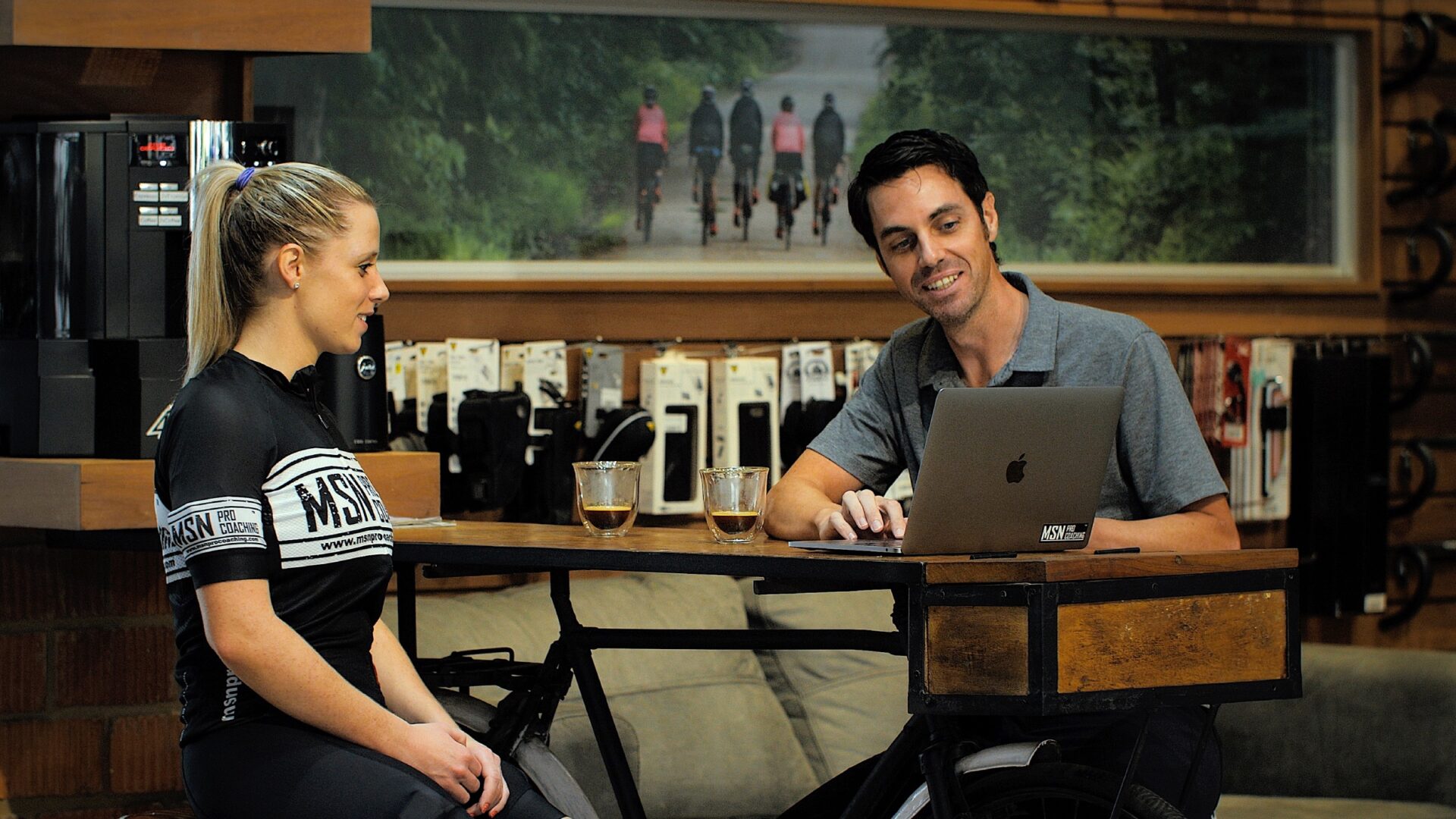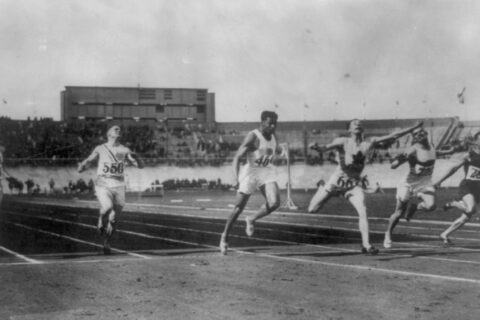In over 22 years of coaching, Mike Norton has come to believe that new technology is not a threat to a good process and product. MSN Pro Coaching, a business he launched on the heels of his own career as a pro, has always relied heavily on data analytics, but the services Norton offered to athletes went through many iterations as he set up shop in a variety of different cycling markets that presented unique opportunities and challenges.
In addition to his roster of coaching clients, Norton now consults with pro teams to assess how race-ready athletes are in the lead-up to key events, using key metrics and formulas that he has compiled and refined over time. While he has built a system that automates performance charts and calculations, Norton recognizes that this type of service is time consuming. In fact, he speculates that this might explain why more coaches aren’t offering the same service—it’s easier to sell programs or build a volume-based business. However, he is quick to ask the all-important question, What happens when the volume falls off? Norton believes that coaching businesses focused on templated training programs and related services will be quickly swallowed up by AI.
“As coaches, we are in the people business. We need to be asking how many of our athletes renew our services year over year? Did they achieve their goals? At the end of the season, I need my athletes to win if I want my coaching business to grow,” says Norton.
Independent coaching businesses like MSN Pro Coaching are smart to focus on athlete retention and results if they want to grow, but for new coaches who are just starting out, growth is almost inevitable. Norton suggests that coaching can be a low-risk proposition for enthusiasts who are interested in trying out coaching.
This is largely due to the absence of a universal, credit-based certification for coaches, leaving the profession with relatively few barriers to entry. “Find an athlete who is willing to listen to you, ask them for money, and you’re a coach,” Norton jokes.
Meanwhile, other certifications in the sports industry such as the National Strength and Conditioning Association’s program for certified strength and conditioning specialists (CSCS) is recognized as an industry standard for gyms and fitness centers. Without a similar standard in endurance sports like cycling, it’s often the case that a young coach finds a way to make money before they have acquired a knowledge base or refined their process.
Build a knowledge base that your market will value
When Norton started his coaching business, athletes sought him out because he was one of the two pro cyclists hailing from the state of New York. “In the beginning, it was like, ‘You’re a pro, you’re going to show me how to do it. Great.’ I locked in on that, but there’s a whole lot more to establishing a sustainable coaching business.”
RELATED: The Craft of Coaching Module 4 // The Business of Coaching
On moving to Wisconsin, his network and name recognition evaporated—he knew no one. He set up shop in the leading local bike shop and did more than 1,500 bike fits for athletes. Along the way he picked up clients and ultimately partnered with the shop to use a portion of their space to host group rides that were open to the public for a small fee. “In a February snowstorm, I would have a revolving door at this bike shop in the middle-of-nowhere Wisconsin, with as many as 80 people coming in.” As much as Norton appreciated their enthusiasm, he quickly realized it was a detraction from his coaching clients.
“The person who paid $8 for a class was like Velcro—they would stick themselves to me and ask every question under the sun for the full 60 minutes they were there. Meanwhile, I just got to wave to the client that was paying me to coach them,” he explains.
Over the 10 years Norton was based in Wisconsin, he moved away from the partnership with the bike shop and opened an upscale cycling club with a membership model featuring all the amenities, including personal lockers and an espresso machine. This time around, it was free to Norton’s coaching clients and every bit as appealing to the local market. The drawback was that he was not able to be as engaged in the data and science of performance. “People were not really hiring me for my coaching skill. They were hiring me to be in the club,” he says.
Despite the success of his club, Norton knew this wasn’t what he wanted for his business long term. When his wife was presented with an opportunity in South Africa, he closed the club and lost a decent portion of his coaching business in doing so because his athletes, the vast majority of which were triathletes, were predominantly looking for personal interaction.
Do what it takes to reach the next level
Even as his coaching business was taking off in Wisconsin, Norton made the decision to pursue a master’s in exercise physiology. Led by his own curiosity for sport science, he wanted to dive deeper into the data and better understand the systems that informed it.
As a graduate student, Norton was assigned to work with the softball team as part of a sports performance program at the university, a sport he knew nothing about, and he was working with a coach who was not very motivated to use data analytics. His coaching experience and communication skills paid off, and he was able to persuade the coach to use biometrics and implement changes that paid off. Working outside of his sport broadened his understanding of what drives athlete performance. Concepts like cardiac drift (how heart rate and stroke volume change over time) became grounded in a deeper understanding of how the body’s systems function. “Prior to that I kind of knew what to look for on the graph, but I didn’t know what was happening within the system and what to look for over time,” he explains.
Norton’s belief that further education would bring more value to the athlete proved to be true in the end. “Without that degree, there are people and companies that would never have talked to me,” Norton says. Now he gauges all opportunities, both educational and professional, against a single question: How is this going to help me be a better cycling coach?
In addition to continual learning, Norton stresses the value of collaborating with other coaches, explaining, “Once I realized there is no special sauce, I stopped seeing other coaches as competition.” Norton began sharing more of his process and ideas with other coaches, which came as a surprise to his colleagues.
As he sees it, the exchange is almost always mutually beneficial—he learns from other coaches and uses the questions they present to further test and refine his own product.
Norton describes a presentation he recently made to cycling coaches where he was asked to speak on periodization. He presented at least a dozen different types of periodization, and the audience identified at least three more. He explained to the group, “It’s not a matter of right or wrong. As coaches, we just need to focus on what we are good at.”
Focus your coaching business on your strengths
By the time he relocated to South Africa, Norton knew it was time to step away from running a volume-based coaching business. He remained fully invested in creating a business rooted in personal interaction, but he was determined to lead out with his strengths as cyclist and data scientist. He was part of a cycling club during his two years in South Africa, but the group was quite guarded so Norton welcomed a hiatus in which he could ride more and devote the bulk of his attention to his coaching clients and new opportunities to consult with teams and organizations on an ongoing basis.
Norton’s colleagues have said he’s a “flow-chart guy” because he likes to take a problem, break it down, and then reverse-engineer a solution. He describes his process as putting together a research paper and then writing the code that allows the athlete to turn the science into application.
“I’m not special. I just want to do the work to build something athletes can use,” he shrugs. He points to the athletes as the product.
In recent years, Norton has had the opportunity to work with dozens of high-caliber athletes, often in an anonymous exchange–looking at their data, interpreting it, and relating his expertise back to the athlete. He describes one athlete in particular who was stuck in a slump. That athlete credited Norton and his process for getting his performance back on track. The pro has gone on to even greater heights in the sport, and Norton takes pride in having played a piece in the puzzle.
To keep up with innovations in data and technology, Norton has used WKO since the product’s inception, as well as Golden Cheetah and TrainingPeaks. His own performance charts are an aggregation of what he has learned from working across a variety of products and platforms, in addition to maintaining close communication with his athletes, asking, “If I’m not talking to my athletes at least every two weeks, how can I possibly know how to build a program for them?”
Stay innovative in your approach and services
Since moving back to New Jersey, just an hour away from where he grew up racing bikes in New York, Norton’s business has benefited from recommendations from former teammates and friends.
Many clients of MSN Pro Coaching travel to New Jersey to do testing with Norton. Due to differences in protocols and equipment that can obscure the data, he opted to open his own lab. Norton oversees all three days of hands-on testing with his athletes, which he finds to be invaluable in analyzing their progress, and athlete performance typically skyrockets in the weeks that follow. For this reason, Norton is a proponent of both data platforms and formal testing and biometrics.
As Norton looks to the future, he is particularly optimistic about using AI as a tool to expedite learning. A combination of very specific queries and a deep understanding of both coaching and endurance sports could open up a new world of possibilities. Norton also uses Chat GPT as a means of accessing the latest research more efficiently, adding, “You still need to read the studies to find out what is most relevant, but AI makes the research more readily available and it’s far more affordable than a $300 membership.”
Despite his fascination with data and technology, Norton describes the complete athlete in metaphorical terms as a triangle with equal sides; training being the easiest side for the athlete to execute. Recovery, which includes sleep, and nutrition make up the other two sides. “I warn athletes that they have to do all three of these or the training I give you is not going to work,” Norton says.
As a self-described “one-man band,” Norton knows there are real limits on how much he can grow his own business. He maintains a waiting list of clients and acknowledges his addiction to the work, but it’s work that he truly enjoys doing and he plans to continually innovate his coaching process in the years to come.





